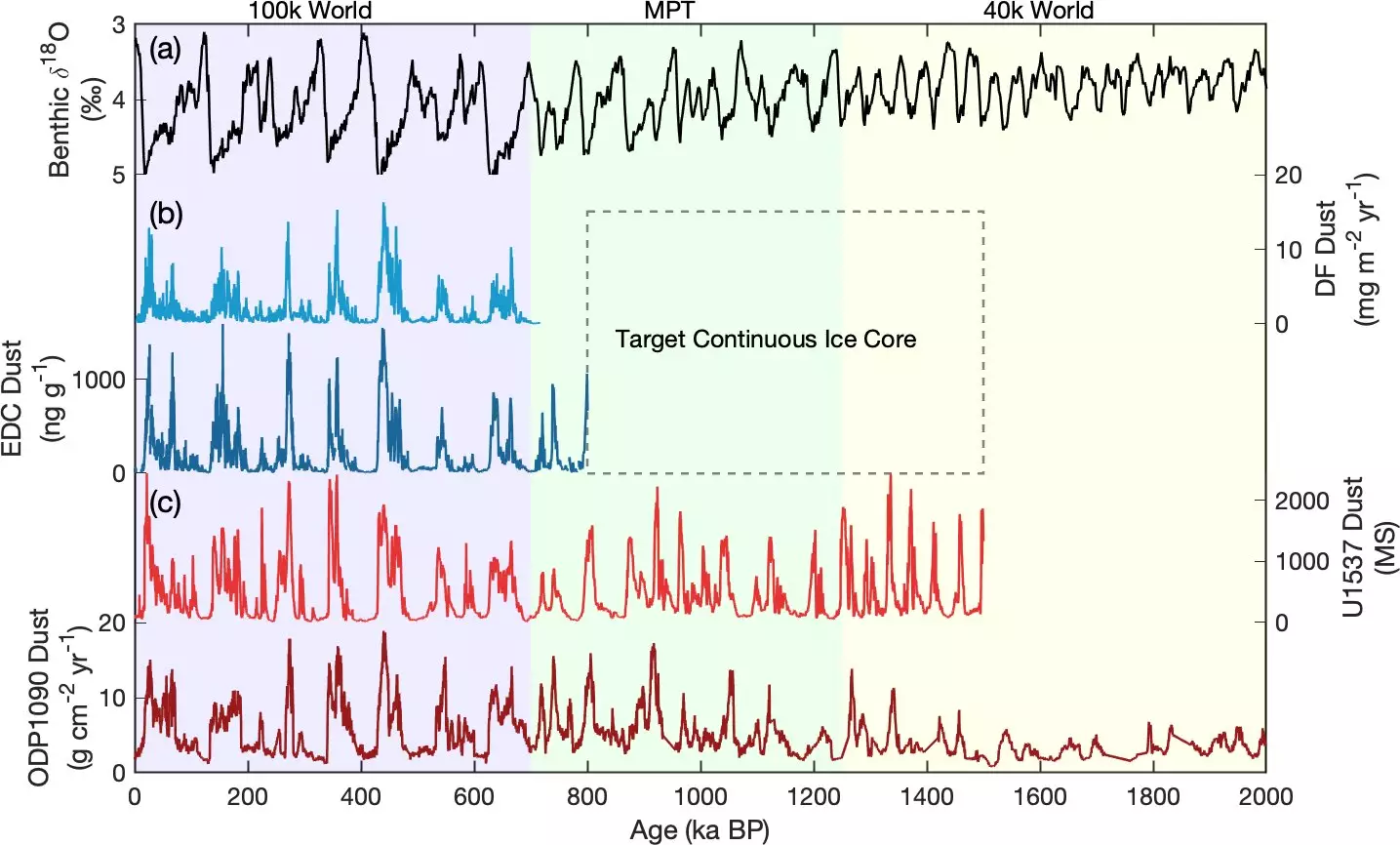The Earth’s climate is an intricate tapestry woven over billions of years, characterized by fluctuating temperatures and ice coverage. Throughout geological history, the planet has undergone numerous glacial and interglacial phases, periods marked by the advance and retreat of ice sheets. These changes have a profound impact on both the planet’s environment and the organisms residing within it. To decode the complexities of historical climate patterns, scientists have turned to ice cores as paramount tools for climatological research. These cores, forged from layers of ice that trapped air bubbles, dust, and other particulates, provide snapshots of ancient atmospheres and conditions, mapping the trajectory of Earth’s climate changes.
Ice cores, such as those retrieved from Antarctica, serve as time capsules that reveal critical clues about atmospheric composition, temperature fluctuations, and even dust levels present during various epochs. Higher dust concentrations often correlate with periods of glaciation, indicating harsher environmental conditions marked by minimal precipitation and increased aridity. The analysis of these ice cores has become a leading method for reconstructing past climates and understanding the natural rhythms of Earth’s climate systems.
The longest continuous ice core record available today, associated with the European Project for Ice Coring in Antarctica at Epica Dome C, covers an impressive timeline extending back 800,000 years. This substantial timeframe captures multiple cycles of glacial and interglacial periods, providing scientists with essential data on the periodicity and characteristics of these climatic shifts. However, an ambitious, multinational scientific endeavor is underway to extend this record even further back in time, potentially encompassing 1.5 million years of climate data.
The pursuit of ancient climate records poses multifaceted challenges. Glaciers, in their relentless movement across landscapes, can disturb the delicate stratigraphy of ice layers, complicating accurate historical readings. Additionally, basal melting, which can occur when ice begins to liquefy at its base, risks the erasure of crucial historical records. Consequently, extensive groundwork is necessary to survey potential drilling sites for optimal ice recovery.
Once promising sites are identified, rapid core retrieval is of paramount importance. Researchers often resort to selective melting techniques to reach deeper, more ancient ice layers swiftly. Advanced methodologies, such as optical logging—which utilizes lasers to assess dust levels—have emerged as invaluable tools in distinguishing the oldest ice samples and their historical significance.
Recent research published in the journal “Climate of the Past” has introduced a promising new candidate for ice core analysis: Site U1537, located near South America. This site, part of the International Ocean Discovery Program, has demonstrated considerable marine dust content, which researchers believe can provide essential insights into dating the oldest ice layers. Led by Dr. Jessica Ng from the Scripps Institution of Oceanography, the research team undertook a comparative analysis of marine dust signatures from Southern Atlantic Ocean ice cores to enhance their understanding of sediment provenance and geological correlations.
By synthesizing samples from this new site with existing records, researchers were able to establish a framework for accurately predicting dust influx and its relevance to ice core timelines. Although a strong correlation was apparent up to 800,000 years ago, the diminishing alignment beyond this point raises intriguing questions about regional variations in dust distribution across the southern hemisphere during earlier climatic periods.
The overarching ambition of this continued exploration of ancient ice is not merely academic; it seeks to unravel mysteries surrounding significant transitional events within Earth’s climatic history, such as the mid-Pleistocene transition. Previous studies suggest that tectonic shifts and the erosion of surface regolith may have contributed to evolving ice sheet dynamics and cooling periods. Still, further exploration is necessary to establish a definitive connection between these geological processes and climate change.
The ongoing investigation into Earth’s ice cores serves as a vital element in deciphering the complexities of climate systems that fluctuate over tens of thousands of years. These records are essential not only for understanding past climate events but also for anticipating future shifts, impacting our ability to navigate ecological challenges in the contemporary world. The intersection of innovative research methodologies and steadfast scientific inquiry offers hope for unlocking the legacy that Earth’s ice has preserved through the ages.


Leave a Reply